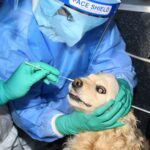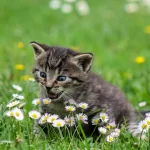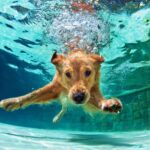
The care of the pet’s health, hygiene, and correct education of the dog are the three pillars of the good coexistence of dogs and people.
There are different aspects that are important when we have a dog as a pet at home. Having a healthy pet means not only keeping it in good health but other aspects as well.
https://thriveglobal.com/stories/facialdentaleesthetics-are-on-the-rise/
You might also like: Tips for anxiety in dogs during a quarantine 
Some of the ingredients that end up in commercial pet foods are truly shocking. What’s more, many of these will not appear on the label and others are hidden under umbrella terms such as ‘meat meal’ and ‘meat by-products’. How can this happen? The pet food industry is highly unregulated. As Ann Martin, author of Foods Pets Die For, writes in her article The Pet Food Industry and its Questionable Practices, ‘Governments in the USA and Canada regulate the labeling of the food, the name and address of the company, the weight of the product, and whether it is made for a dog or cat – nothing more.’
The meats used in pet food can be extremely low grade and unfit for human consumption. Summarized as the ‘4 D’s’ (dead, diseased, disabled, and dying), these can include roadkill, zoo animals, and infected and cancerous meats.
At the rendering plants ingredients are highly heated and processed, destroying nutrients and enzymes, with strong preservatives added which do not appear on the labels. These include fat stabilizers such as BHA (butylated hydroxyanisole) and BHT (butylated hydroxytoluene), both of which are known to cause liver and kidney dysfunction, and Ethoxyquin, a suspected cancer-causing agent. Semi-moist dog foods may also contain propylene glycol, a relation to ethylene glycol (anti-freeze), which can destroy red blood cells.
Pets in your pet food
You might also like: HOW TO REDUCE YOUR DOG’S ANXIETY
Though reportedly not the case today, it is well recorded that dogs and cats have ended up in dog and cat food. In his 1990 article How Dogs and Cats Get Recycled Into Pet Food, John Eckhouse, an investigative reporter, wrote: ‘Each year, millions of dead American dogs and cats are processed along with billions of pounds of other animal materials by companies known as renderers. The finished products — tallow and meat meals — serve as raw materials for thousands of items that include cosmetics and pet food.
Doctor of veterinary medicine Wendell Belfield in Foods Not Fit For a Pet (Earth Island Journal, 1996), reports that ‘federal and state agencies, including the Food and Drug Administration and medical groups such as the American Veterinary Medical Association and the California Veterinary Medical Association, confirm that pets, on a routine basis, are rendered after they die in animal shelters or are disposed of by health authorities, and the end product frequently finds its way into pet food.’
Toxic Grains
The very use of grains in pet food is questionable as grains are ill-suited to the digestive physiology of carnivores. This is especially so for cats who are obligatory carnivores and meet their glucose requirements through amino acids in their diet. Further, the grains used in dog and cat foods may contain mycotoxins, fungi that can cause chronic conditions and even death in both humans and animals. As the grains used in pet food are low grade, they are dealt with last in the handling process and because of this are often left in storage where insects, mites, and mycotoxin molds can grow.
The consumption of dead mites can cause skin allergies. If your pet has skin allergies, change their diet first before turning to steroids which can be seriously detrimental to your pet’s health.
Aflatoxin poisoning, a common mycotoxin that grows on corn as well as other foods, has been reported for over 50 years. Vomitoxin is another mycotoxin found in wheat products. Where large doses of mycotoxins can cause cancer and even rapid death, small continuous amounts may suppress the immune system and damage organs over time, leading to long-term chronic health conditions.
Just recently at the end of 2005, over 100 dogs were killed in the United States because of aflatoxin found in pet food, with some 19 brands of Diamond dog food being recalled. It is likely there were many more deaths than those reported, and as aflatoxin attacks the liver it is likely surviving dogs may develop chronic liver disease or liver cancer in the future.
Toxic Chemicals
The toxin sodium pentobarbital, a chemical is used to euthanize animals and pets, has been found in commercial pet foods. The US Food and Drug Administration’s Center for Veterinary Medicine performed two studies (1998 and 2000) to test for pentobarbital. Of the 74 samples analyzed, over half were found to contain pentobarbital. What’s more, none of the 43 brands and product lines that tested positive warned of its presence on their labels.
You might also like: HOW TO REMOVE AND PREVENT TICKS
The FDA researchers also tested the food for the presence of dogs or cats but reported none present. It was believed the pentobarbital residues were entering pet foods from euthanized, rendered cattle, or even horses.
The FDA says the small amounts of the drug found in these foods were harmless, but not all veterinarians agree. Long-term continual doses, even at small levels maybe increase the onset of chronic and degenerative diseases.
Aside from the toxins and base ingredients of commercial pet foods, these harshly processed and high-carbohydrate products in no way match the natural diets dogs and cats would have eaten in the wild. They are species-inappropriate and ill-suited to canine and feline physiology. I recommend healthy, homemade, raw diets or optimum natural, holistic alternatives for the health and well-being of your dog and cat. Before embarking on a raw food diet (otherwise known as BARF – ‘biologically adequate raw food’), thoroughly research the area first as nutritional balance is essential.

Working from home with your dog or cat
The corona crisis has caused a lot of fear and uncertainty. That makes sense. Your animal can therefore also be a bit upset. Dogs and cats often capture our emotions flawlessly. It can be a bit strange for them to see you scared, angry, or sad. Maybe because of this your animal tries to contact you a little more, or maybe he avoids you a little more because you are a little out of your mind. Read our tips for working from home with your dog or cat below!
Stay calm
It’s just how it is. You cannot change the situation and the people around you, but you can influence your own behavior. The calmer and calmer you stay, the better it is for your animal. After all, you are his rock! Are you concerned that your four-legged friend could also suffer from the coronavirus? We have presented the most frequently asked questions about the coronavirus in cats and dogs to veterinarian Atjo Westerhuis of EduVet.
Provide rhythm
If you are more at home or work, try to keep to the familiar rhythm as much as possible, for example walking and feeding. Keep your own rhythm as much as possible not only for your animal but also for yourself, for example, the same working hours at home as at the office. Don’t forget that you will soon have to return to the old rhythm of being away from home and/or working.
Everything at home?
Hoarding is really not necessary.
Hoarding is really not necessary. It is useful to check whether you have enough of everything at home because delivery times can now sometimes be slightly longer than normal. Then it is nice that you do not find out at the last minute that your food is almost finished or the strip of medicine for your dog or cat is almost empty.
Distraction
If you work from home, your dog or cat can provide some nice distraction, but also distract you from your work. Does your animal come to lie with you? Then provide an extra basket, rug, or pillow near your workplace. Does your animal keep asking for attention and can you therefore not work properly undisturbed? You can optionally place a gate or screen door in the doorway to your workspace so that your animal can hear, see and smell you, but not constantly climb on your lap or walk over your keyboard. Provide something fun to play with or treats to chew. Make a ball pit for your cat or put your dog to work with toddler sausage!
Don’t feel guilty
Don’t feel too guilty if, even though you may be at home a lot now, you don’t feel like, have the time or opportunities to do anything with your animal during these strange times. If you don’t mind that, you don’t have to come up with all kinds of special things to keep your dog or cat busy. Just look at livesofstreeties how free-living dogs in India spend their day. They lie a lot. Just to sleep, or quietly on the lookout. Perhaps your dog or cat can relax in the garden or on the balcony now that you are at home.
You might also like: HOW TO REDUCE YOUR DOG’S ANXIETY
Nice things
But it may also be that you now have the time and desire to do fun things with your animal. This is possible if due to the current circumstances you have few options to really get out and about, just in the house or garden. Surprise your dog with garden sausage or choose from these fun keepers for your cat.
Especially for the kids
Do you have children at home? Then go tinkering together! For example, make a sniffing heart or ghost for your dog or cat together with the kids. And even if you are temporarily unable to go to school, there is always something to learn. For example, use these great tips about the interaction between child and dog.
Need help?
If you have specific questions about the coronavirus and pets, you can always contact our veterinary clinic EduVet. Do you have another question about your pet? Then contact our CareTeam. We are happy to help you with good advice, a listening ear, or just an arm around your shoulder.
Vitamin L
Now that we have to limit our social contacts it can be a bit lonely, all that being at home or working from home. But instead of catching up at the lunch table or by the coffee machine, you can now just cuddle up with your furry colleague for some much-needed vitamin L (love). Being together is the most important thing. Always, but certainly now. We at Prins now also work at home together with our four-legged friends! Below you can see colleague Jasmin from online marketing with her cat Charlie and copywriter Judith enjoying a beautiful view of her puppy Stitch while working from home.
You might also like: HOW TO REMOVE AND PREVENT TICKS 
Some activities are necessary to maintain an optimal state of physical and mental health of your dog and, although they can be seen as complicated, these should not stop. Next, we share some hygiene measures that will help you when returning home with your dog and maintaining good hygiene.
According to the amount and type of dirt, we can define two cleaning options:
For light soiling, use damp towels.
If they made a quick exit and you think your dog did not come into contact with any substance that was harmful to him, you can use a wet wipe to clean his paws, but be sure to read on the packaging that they are safe and approved for use on pets.
A simple and inexpensive variant is to use paper towels dampened with a little warm water and dog shampoo to clean their paws before entering the house.
For a lot of dirt, do a foot bath.
If your dog’s departure was very active and crossed several surfaces or if you think that he stepped on any substance that could affect his health, deep cleaning will be necessary, at least on his legs.
With small dogs, you can use a sink, and with large dogs, you can do it in the bathtub. In both cases, use warm water and dog shampoo to scrub the dirty areas very well and clean from their pads to above their ankles. Rinse very well to avoid leaving soap residue.
Aspects to take into account when cleaning the dog’s paws:
- Cleans very well around fingers and nails. Do this by separating and rubbing each of your fingers and don’t forget to gently but firmly rub your pads as well.
- Dry their paws with a clean towel. After washing, take a clean towel to dry all parts of your dog’s paws very well, this will prevent him from slipping or leaving traces of moisture around the house.
- Check for wounds on your dog’s paws. Depending on the intensity of the route or the terrain you have walked on, your dog may generate injuries to its legs, so when you return home you should check very well for any damage such as cuts, scrapes, or blisters. If the wound appears serious and may be infected, take your dog to the vet right away. If, on the contrary, the wound seems slight, you should wash it to prevent it from becoming infected. Carry out the same washing process doing it very carefully and at the end apply a light amount of diluted antiseptic, use one that is suitable for use on pets.
Tips for maintaining a recurring cleaning on your dog’s paws
- Keep their fur well-trimmed. Having their legs with short fur will facilitate their cleaning.
Use special balms for dog paws. Apply it on their feet and pads before going outside, the balm will work as a protective layer. - If your dog accepts it, turn to dog booties. These will help reduce dirt on your legs, as well as extra protection against certain surfaces or substances.
- Place a cleaning station at the entrance of the house. To get in the habit, you can create a cleaning station for each time they return from the street. Some ideas are a clean rag, a bucket of clean water, wet wipes, and dry towels.
You might also like: Tips for anxiety in dogs during a quarantine
Cleaning the dirt from your dog’s legs, in addition to hygiene, will allow you to see if they are not hiding a wound that if not detected in time can progress towards a greater problem.




